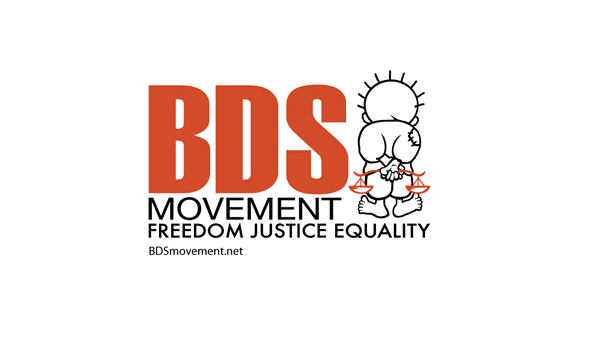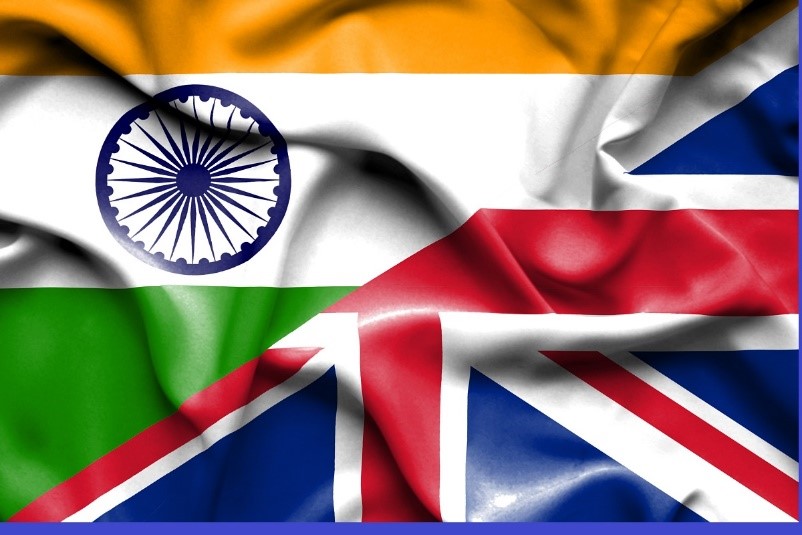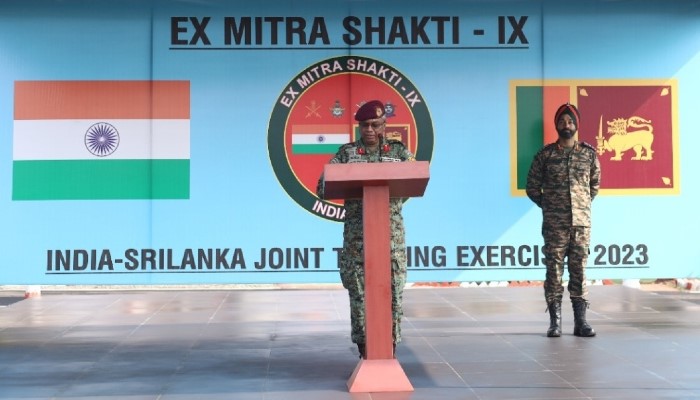BDS Movement
Prelims: BDS Movement Facts
Mains: The Three R’s: Anti-Semitism, Racism, and Apartheid
Context:
German newspaper said the Indian poet Ranjit Hoskote supported the BDS movement and called him “anti-Semitic.”
Overview of the BDS Movement
- Initiated in 2005 by more than 170 Palestinian groups, the BDS (Boycott, Divestment, Sanctions) movement seeks international backing for the rights of the Palestinian people.
- Describing itself as an “inclusive, anti-racist human rights movement,” BDS opposes all forms of discrimination, including anti-Semitism and Islamophobia, drawing inspiration from the South African anti-apartheid movement.
Objectives of BDS
BDS advocates nonviolent pressure on Israel to comply with international law through three key demands:
- Ending Israel’s occupation and colonization of Arab lands and dismantling the Wall.
- Recognizing the rights of Arab-Palestinian citizens of Israel to full equality.
- Respecting, protecting, and promoting the rights of Palestinian refugees to return to their homes, in accordance with UN Resolution 194.
Strategies Employed by BDS
- BDS employs various strategies, including boycotting Israeli government entities, associated institutions, and companies engaged in human rights violations.
- Divestment campaigns encourage institutions to withdraw investments from Israel, while sanctions campaigns aim to pressure governments into fulfilling legal obligations to end Israeli apartheid.
- BDS strategically focuses on a select number of companies and products to maximize impact.
Israeli Government’s Reaction
- Israel’s Prime Minister Benjamin Netanyahu associates BDS with anti-Semitism, whereas BDS argues that criticism of Israel’s violations of international law should not be equated with anti-Semitism.
- Israeli Minister Gilad Erdan has led efforts against the economic boycott of Israel, downplaying the perceived threat.
Economic Impact of BDS
- BDS has prompted certain brands and celebrities to refrain from working in Israel.
- Assessing the impact on an entire state’s economy is challenging due to various factors.
Nevertheless, BDS aims to be a potent tool in ending western support for Israeli apartheid and settler colonialism.
The India-UK Free Trade Agreement: A Strategic Realignment in Trade Relations
Context:
The recent discussions between the External Affairs Minister and the British Prime Minister have brought the India-UK Free Trade Agreement (FTA) to the forefront of bilateral negotiations.
Significance of the FTA
Upon finalization, the FTA is anticipated to not only strengthen economic ties between India and the UK but also serve as a model for similar agreements with the European Union (EU), India’s second-largest trading partner.
Understanding Free Trade Agreement (FTA)
- A Free Trade Agreement (FTA) is a legally binding trade pact between two or more countries or regions aimed at reducing or eliminating trade barriers and fostering economic cooperation.
- FTAs are designed to ease the exchange of goods and services across borders by reducing or eliminating tariffs, quotas, and non-tariff barriers such as regulations and licensing requirements.
- The objective is to create a more open and competitive trade environment, promoting economic growth and prosperity among participating nations.
India’s Considerations and Relations with the UK
- Economic Integration: India is shifting its trade strategy to strengthen economic integration with Western and African nations, departing from previous trade deals that widened deficits with East Asian countries.
- Reducing Dependence on China: The disruption of global supply chains during the pandemic highlighted the risks of overreliance on China. Western countries, including Australia and the UK, are now exploring a ‘China-plus one’ approach in trade.
- RCEP Exit: India’s withdrawal from the China-dominated Regional Comprehensive Economic Partnership (RCEP) underscores its intent to enhance trade ties with the UK, EU, Australia, and others as a counterbalance to China’s influence.
Brexit Influence and UK’s Perspective
Crucial for the UK: A trade deal with India is of significant importance for the UK, especially in the face of a challenging election in early 2025. Concerns that led to the Brexit vote make the UK cautious about offering work permits to Indian service sector workers under the FTA.
Market Compensation: Despite Brexit uncertainties, the vast Indian market provides London with an opportunity to offset the loss of access to the European Single Market.
Benefits for India and the UK
- India’s Gains: Sectors like apparel and gems & jewellery in India, which are labor-intensive, have faced challenges with declining market share. A trade deal could potentially level the playing field with competitors like Bangladesh, though it may have repercussions on Least Developed Countries.
- UK’s Advantages: Past trade deals have shown that eliminating duties doesn’t guarantee export growth. Reduction of tariffs on British exports like cars, whisky, and wines could provide deeper access to Indian markets. The tariff disparity indicates potential for alignment.
Addressing Non-Tariff Barriers (NTBs)
Modern FTA Scope: FTA negotiations could focus on eliminating non-tariff barriers (NTBs), historically hindering exports and involving regulations, standards, testing, certification, or reshipment inspections, particularly in agriculture and manufacturing.
Conformity Assessments: Indian agricultural exporters often face strict limits on contaminants, and Indian products face rejections due to conformity assessments and technical requirements.
Carbon Tax and Impact
The UK, similar to the EU, is contemplating a carbon border adjustment mechanism (CBAM) imposing a carbon tax on certain imports based on emissions. This move may affect India’s exports, even with reduced tariffs, especially in sectors like cement, chemicals, steel, and power generation.
Conclusion
The India-UK Free Trade Agreement signifies a strategic shift in India’s trade policy, emphasizing Western and African integration while mitigating dependence on China.
For the UK, it provides an opportunity to compensate for Brexit-related losses and strengthen ties with a significant economic partner. Addressing tariff disparities, NTBs, and carbon taxes will be pivotal in shaping the FTA’s impact on both nations’ economies
The economic ramifications arising from enduring frictions between the central and state governments in India
Prelims: Basics of Centre State Relations, 7th Schedule,
Mains: Ramifications of Friction, Sarkaria Commission Report
Context:
Historically, the relationship between the Union government and the States in India has been characterized by conflicts, with recent years witnessing an increase in both the frequency and intensity of these disputes.
Termed as ‘persistent frictions,’ these disagreements not only impact the cooperative federalism model but also leave a lasting imprint on the economic landscape.
Historical Background of Centre-State Disputes:
Long-standing Disputes:
The conflicts between the Centre and States regarding economic policies have deep roots in India’s political history. However, in recent years, there has been a rise in the frequency and intensity of these conflicts, evolving them into persistent issues within the federal system.
Erosion of Cooperative Federalism:
The essential cooperative federalism model faces a threat due to the hardened stance of both the Centre and the States.
Contentious issues, including resource sharing and the standardization of social sector policies, challenge the collaborative spirit required for effective governance.
Changing Economic Dynamics:
Transformation in Economic Relations:
Significant changes have occurred in the economic relations between the Centre and States since the 1980s and 1990s.
While economic reforms have granted autonomy to States in investments since 1991, their control over public expenditure policies remains constrained by dependence on the Centre for revenue receipts.
Shift in Give and Take Equation:
The traditional ‘give and take’ equation has shifted to a more rigid standoff, limiting negotiation opportunities.
As economic reforms progress, the autonomy of States is further restricted, resulting in persistent frictions that undermine cooperative federalism.
Economic Ramifications of Frictions:
- Centre Dominating State Investments:
Dilemma in Infrastructure Development:
Recent initiatives like PM Gati Shakti, aimed at integrated planning, reveal a scenario where the Centre’s dominance leads to the crowding out of States in terms of investments. Centralized planning restricts the flexibility of States, resulting in underinvestment in crucial areas.
Disparities in Capital Expenditure:
Examining capital expenditure on roads and bridges shows a significant growth in the Centre’s capex compared to the States. Disparities among States highlight challenges posed by the increased influence of the Centre.
- Fiscal Competition and Welfare Provisioning:
Distinct Fiscal Competition:
Persistent frictions give rise to a unique fiscal competition between the Centre and States, with State governments competing regionally and against the Centre. This competition, especially in welfare provisioning, is exacerbated by the enhanced fiscal space of the Centre.
Disparities in Spending Power:
While the Centre enjoys increased spending power, States face limitations, especially in non-tax revenues. This disparity affects welfare provisioning, creating an uneven playing field and impacting citizens’ overall economic well-being.
- Inefficiencies of Parallel Policies:
Emergence of Parallel Policies:
Federal abrasions lead to the emergence of parallel policies, with both the Centre and States duplicating each other’s efforts. For instance, pension reforms see some States reverting to old schemes due to a trust deficit in the federal system.
Long-Term Economic Consequences:
Inefficiencies associated with parallel policies, such as pension reforms, have lasting consequences on the economy. Trust deficits in the federal system contribute to States rolling back on certain schemes, impacting the nation’s fiscal health.
Preserving Inevitable Interdependence:
Necessity of Interdependence:
Despite persistent frictions, the interdependence between the Centre and States is crucial for effective governance. Many laws and policies implemented by the Centre require State cooperation, emphasizing the need to preserve this interdependence.
Balanced Approach to Cooperative Federalism:
Essential Balance:
Striking a balance between State autonomy and the Centre’s overarching goals is crucial for fostering cooperative federalism benefiting both levels of government. Addressing trust deficits and promoting dialogue are pivotal for achieving a harmonious economic relationship.
Conclusion:
The economic consequences of persistent frictions between the Centre and States in India have far-reaching effects on infrastructure development, fiscal competition, and policy efficiency.
While the evolving economic landscape provides some room for States, careful consideration is needed to address the challenges posed by the Centre’s dominance.
Striking a balance between cooperative federalism and State autonomy is imperative for sustainable economic growth and effective governance in the diverse Indian context.
Resolving these persistent frictions becomes crucial for the overall well-being of the nation as India navigates its path towards development.
Anti-Submarine Waterfare Craft ‘Amini’
Key Details:
- Amini stands as the fourth installment among the eight projects dedicated to the construction of Anti-Submarine Warfare Shallow Water Craft (ASW-SWC).
- Garden Reach Shipbuilders and Engineers (GRSE) is the entity behind its construction, commissioned specifically for the Indian Navy.
- The ship bears the name ‘Amini,’ symbolizing the strategic maritime significance attributed to the Amini island in Lakshadweep, situated approximately 400 km west of Kochi.
About Anti-Submarine Warfare Craft:
The Anti-Submarine Warfare Craft corvettes represent a class of vessels dedicated to anti-submarine warfare (ASW) within the Indian Navy’s fleet. Developed as a successor to the aging Abhay-class corvettes, these vessels are tailored for various roles:
- Subsurface surveillance in littoral waters,
- Execution of search-and-attack unit (SAU) missions, and
- Participation in coordinated anti-submarine warfare operations alongside naval aircraft.
Additionally, these craft fulfill secondary duties such as defense against intruding aircraft, minelaying, and engagement in search-and-rescue (SAR) operations.
Exercise Mitra Shakti
In News: The India-Sri Lanka Joint Exercise Mitra Shakti – 2023 has recently commenced.
Key points:
- This marks the ninth edition of the Joint Military exercise.
- The exercise is taking place in Aundh (Pune).
- The Indian contingent, consisting of 120 personnel, primarily comprises troops from the Maratha Light Infantry Regiment.
- Objective:
– The primary objective of the exercise is to collectively practice Sub Conventional operations in accordance with Chapter VII of the United Nations Charter.
– The exercise’s scope encompasses coordinating joint responses in counter-terrorist operations.
5. Exercise MITRA SHAKTI – 2023 will incorporate the use of Drones and Counter Unmanned Aerial Systems, in addition to helicopters.






